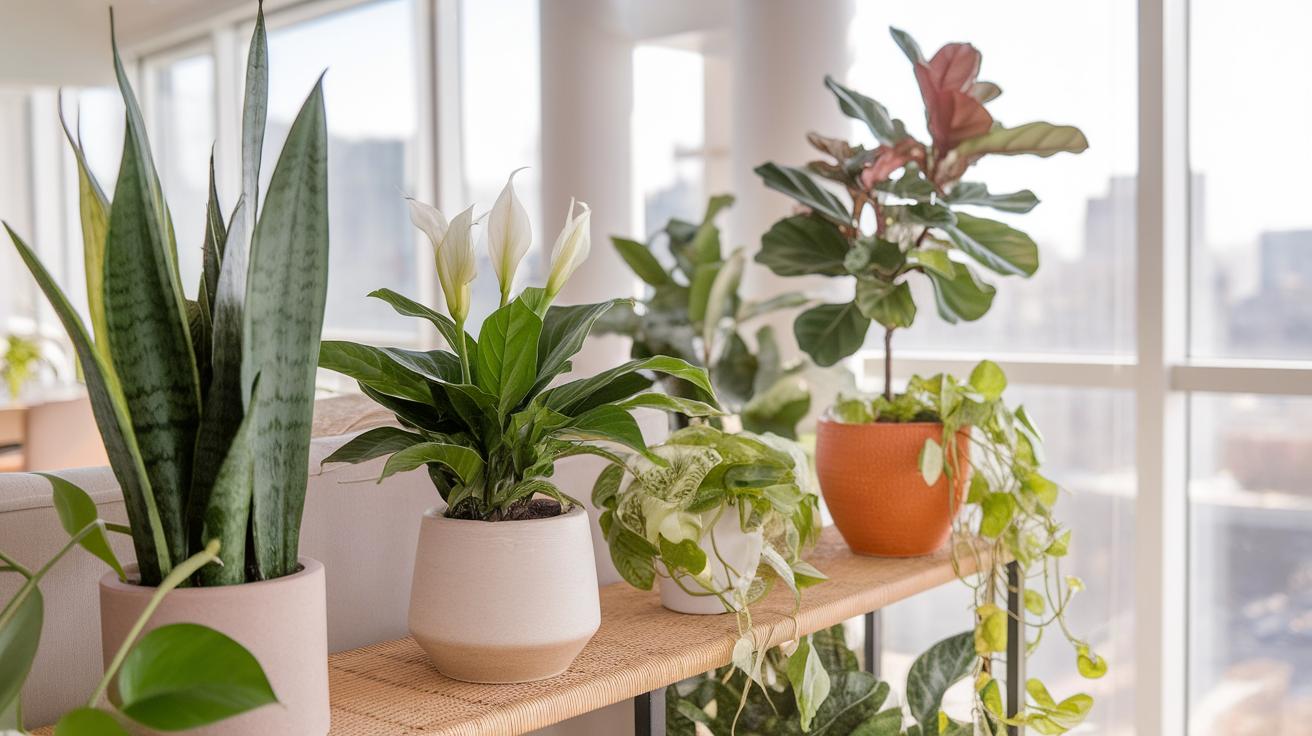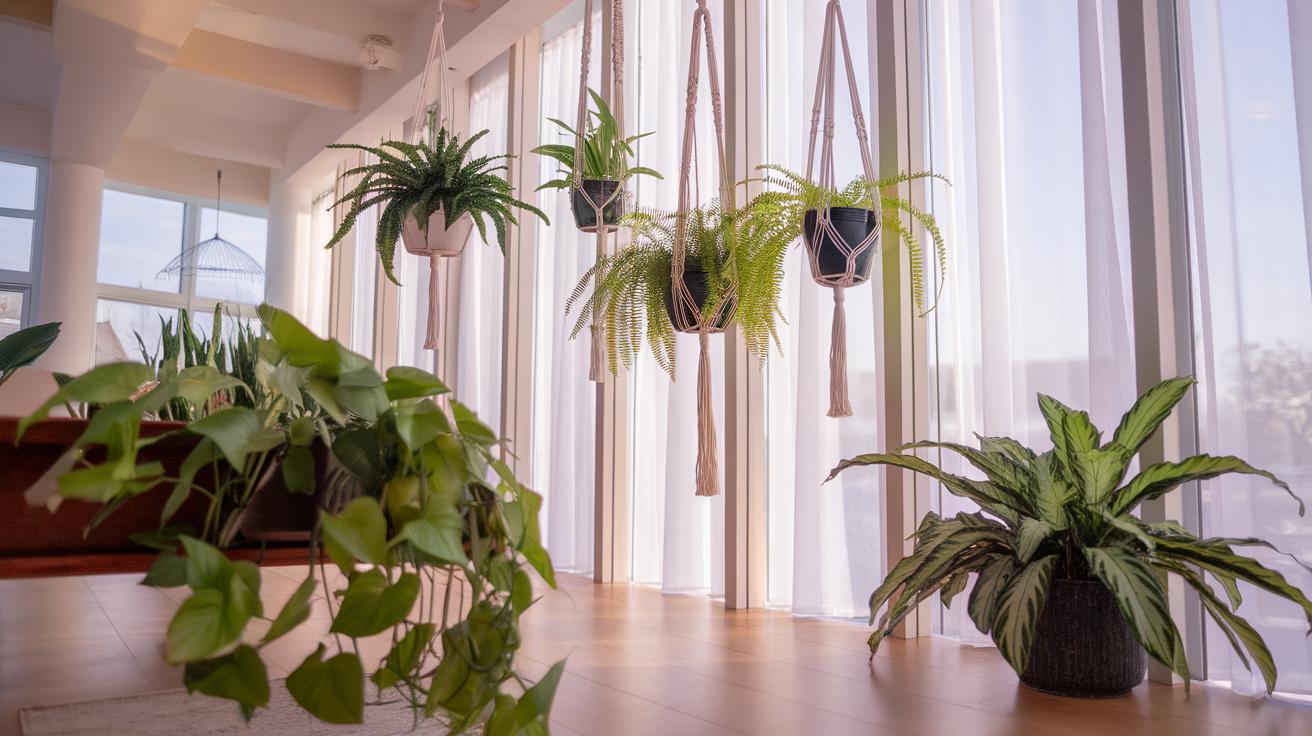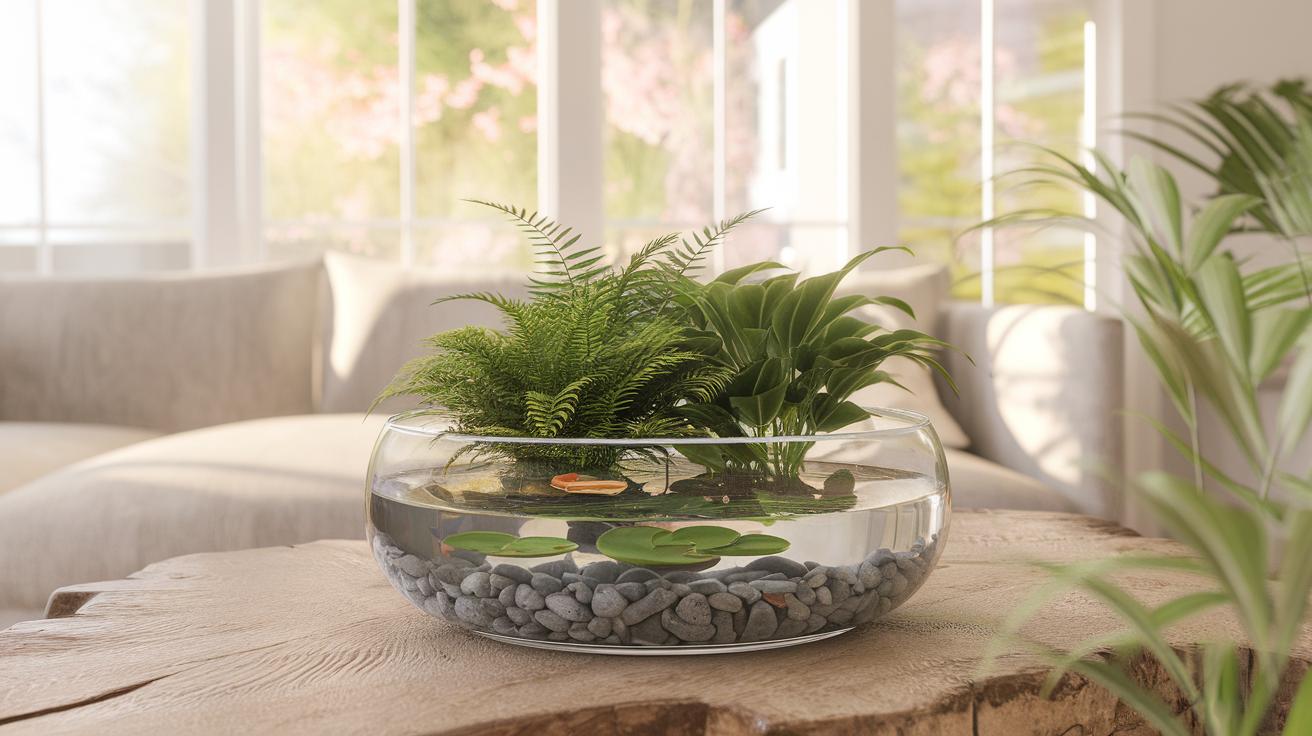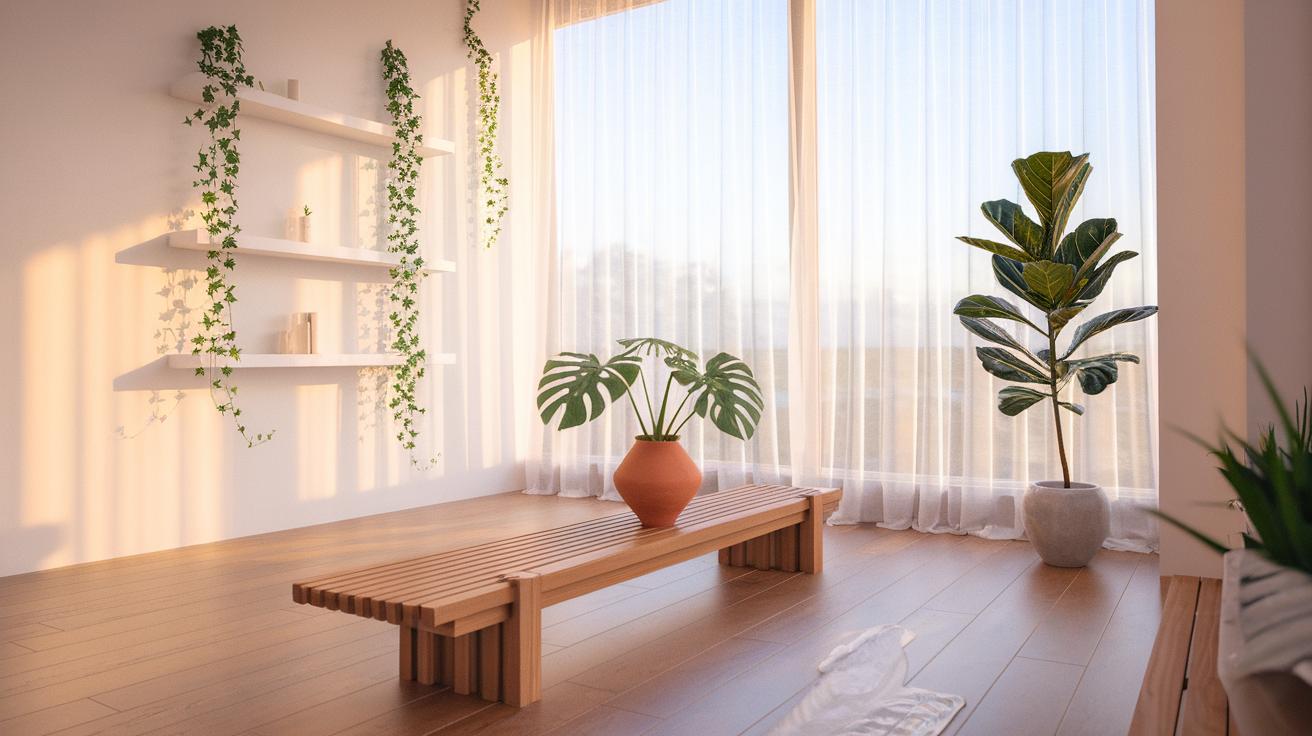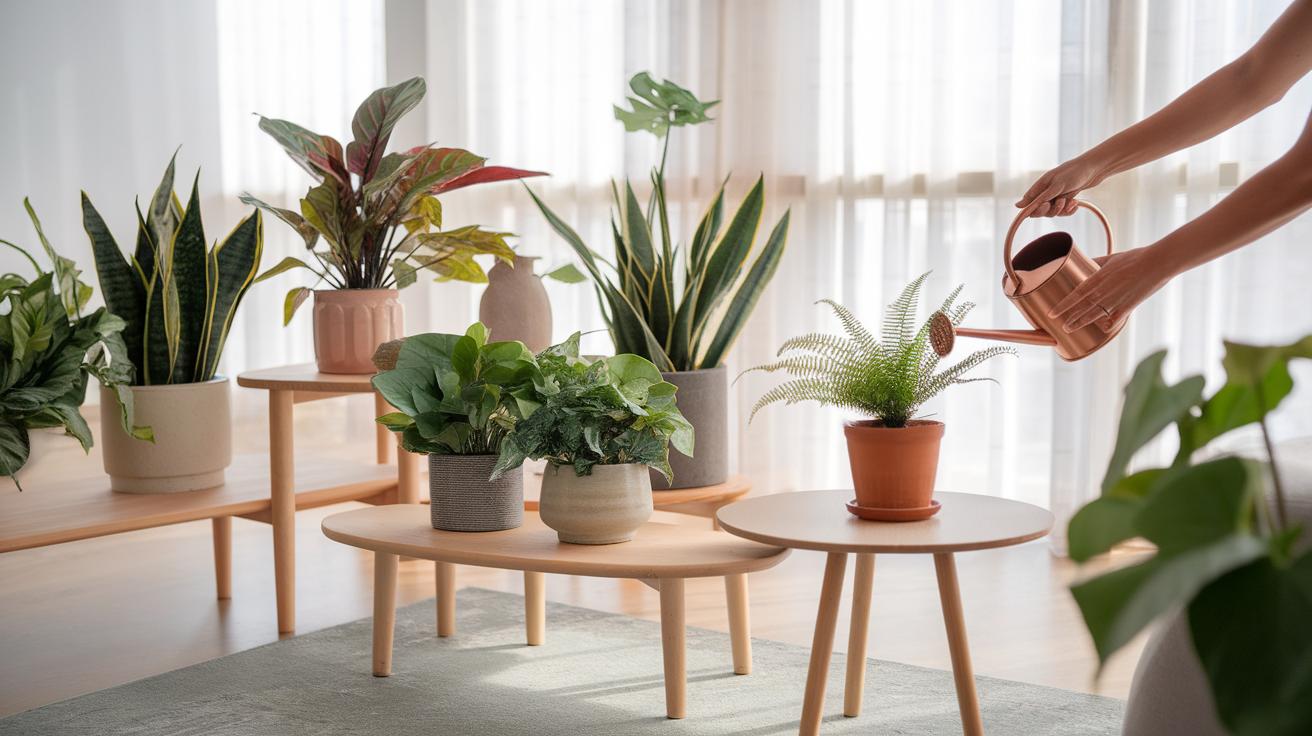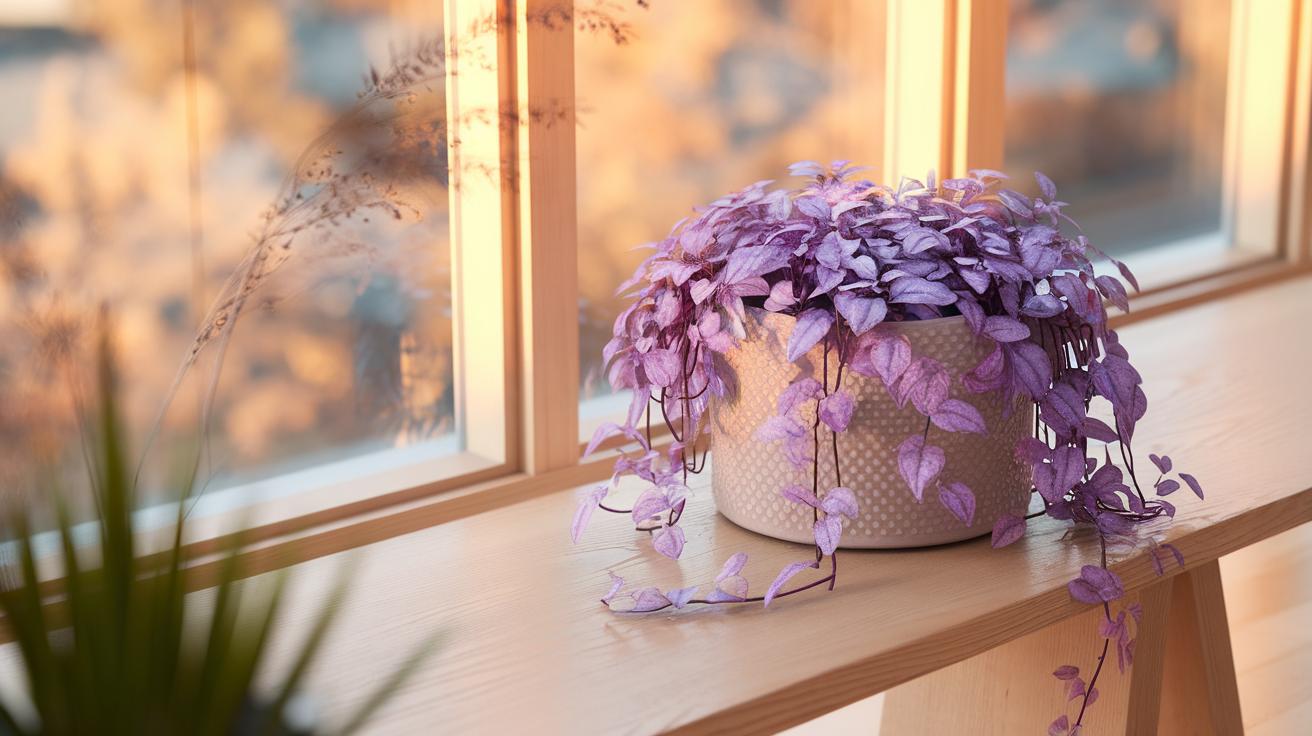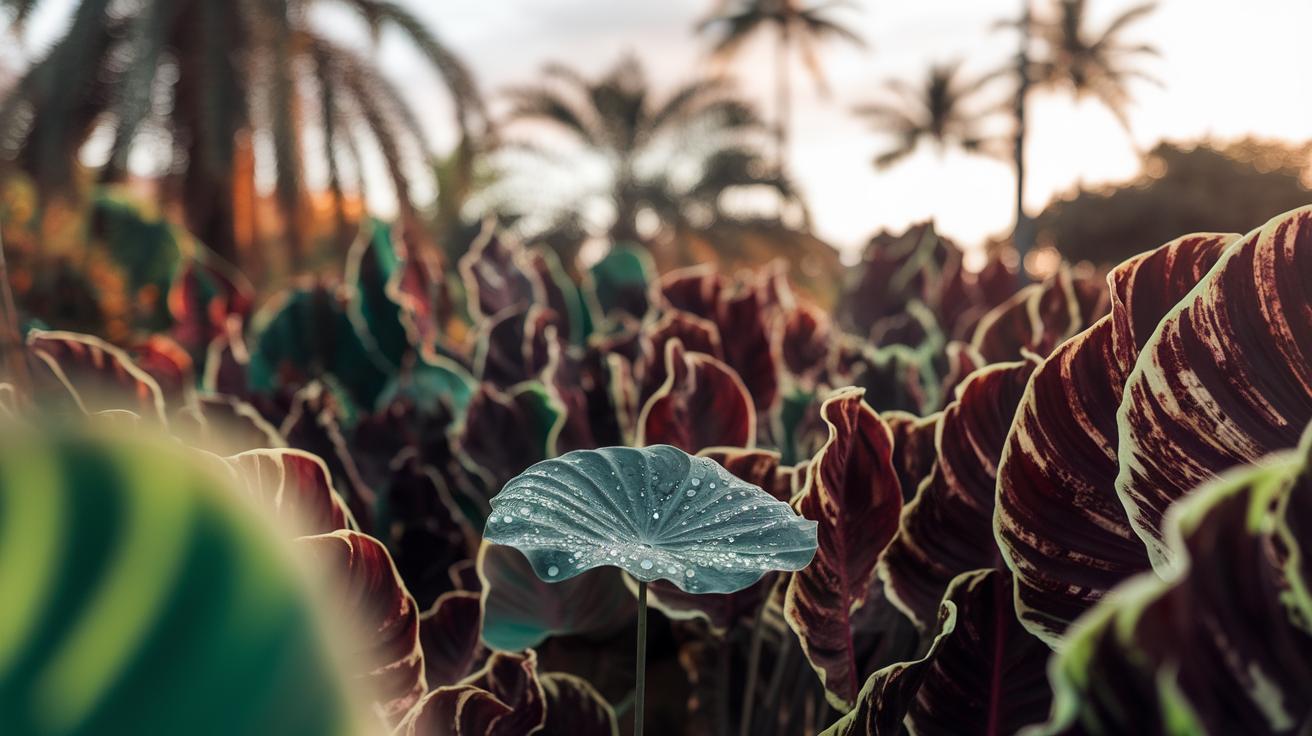Introduction
Indoor plants bring more than just beauty to your home. They can improve the air you breathe and create a healthier environment. Many indoor plants naturally filter harmful toxins from the air. Adding the right plants to your living spaces can boost your wellness by reducing airborne pollutants.
You might wonder which indoor plants work best for cleaner air. This article covers practical choices for indoor plants that not only enhance your home décor but also help purify your surroundings. Learning how these plants improve air quality can inspire you to cultivate a natural, healthier living space for yourself and your family.
Understanding Indoor Plants and Their Roles
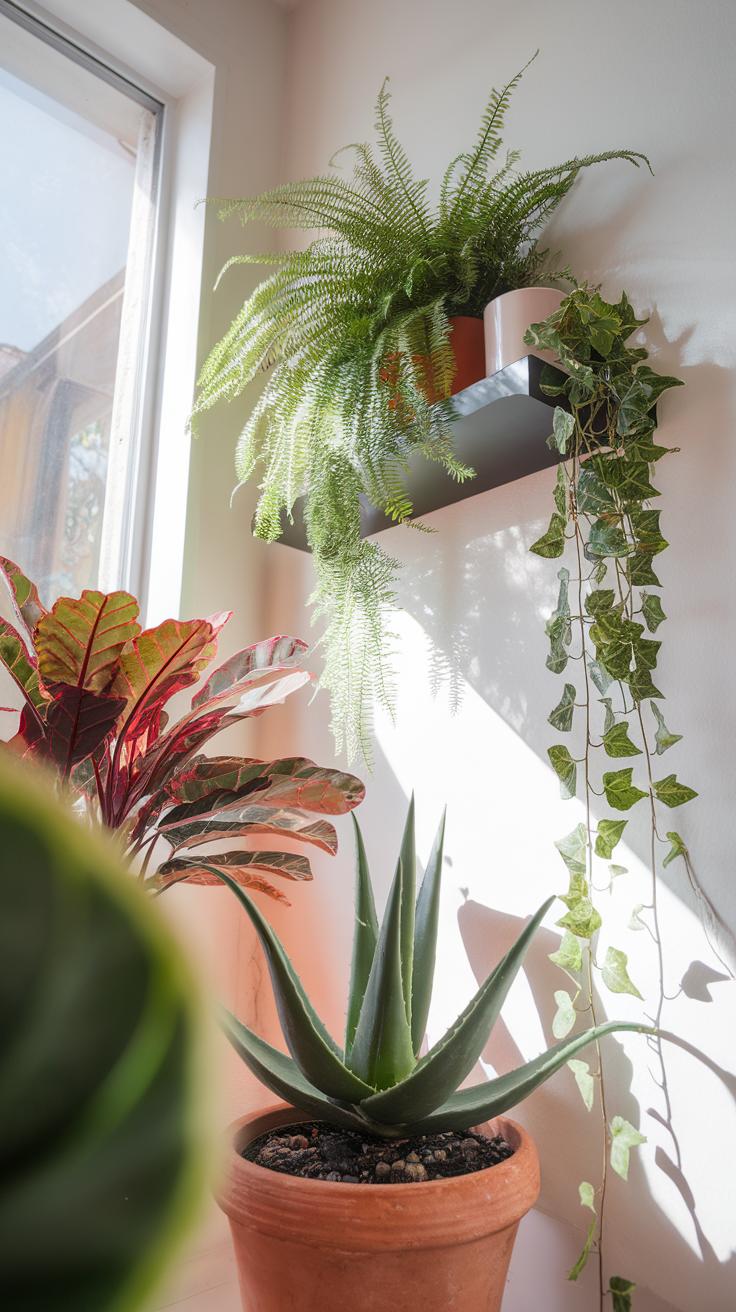
Indoor plants are living plants grown inside your home or office. They adapt to the lower light, temperature changes, and limited space indoors. To survive, many develop slower growth or thicker leaves to hold water better. Some plants naturally thrive in shaded or low-light conditions, making them perfect for indoor spots.
Besides adding beauty, indoor plants improve your air quality. They absorb carbon dioxide and release oxygen through photosynthesis. Many also filter harmful chemicals like formaldehyde and benzene from the air around them. This means cleaner air for you to breathe and a healthier living space.
Have you noticed how a room feels fresher after adding a few plants? This simple change can make your home more inviting and support your well-being without complicated setups or equipment.
Types of Indoor Plants
Tropical plants like the snake plant or peace lily grow well indoors because they are used to warm, humid environments and low light. Their large leaves help capture enough sunlight even in dim corners.
Succulents such as aloe vera or jade plants store water in thick, fleshy leaves. They need less water and do well near windows with bright, indirect light. Their low maintenance suits busy lifestyles.
Epiphytes, like air plants, grow on other plants or surfaces instead of soil. They absorb moisture and nutrients from the air, making them easy to place almost anywhere inside your home. Their unique growth habits add variety to your green collection.
How Indoor Plants Affect Air Quality
Plants improve indoor air through photosynthesis, where they take in carbon dioxide and release oxygen. This helps refresh the air around you, especially in closed spaces.
Some plants also absorb toxins through their leaves and roots. Chemicals released by household items, such as paint or cleaners, can build up in the air. Plants like the spider plant remove these pollutants by breaking down harmful compounds into safer ones.
Do you wonder how much cleaner your air will be with plants? Choosing the right ones can reduce airborne toxins, boost oxygen levels, and lower dust, making your home healthier without extra effort.
Common Indoor Air Pollutants
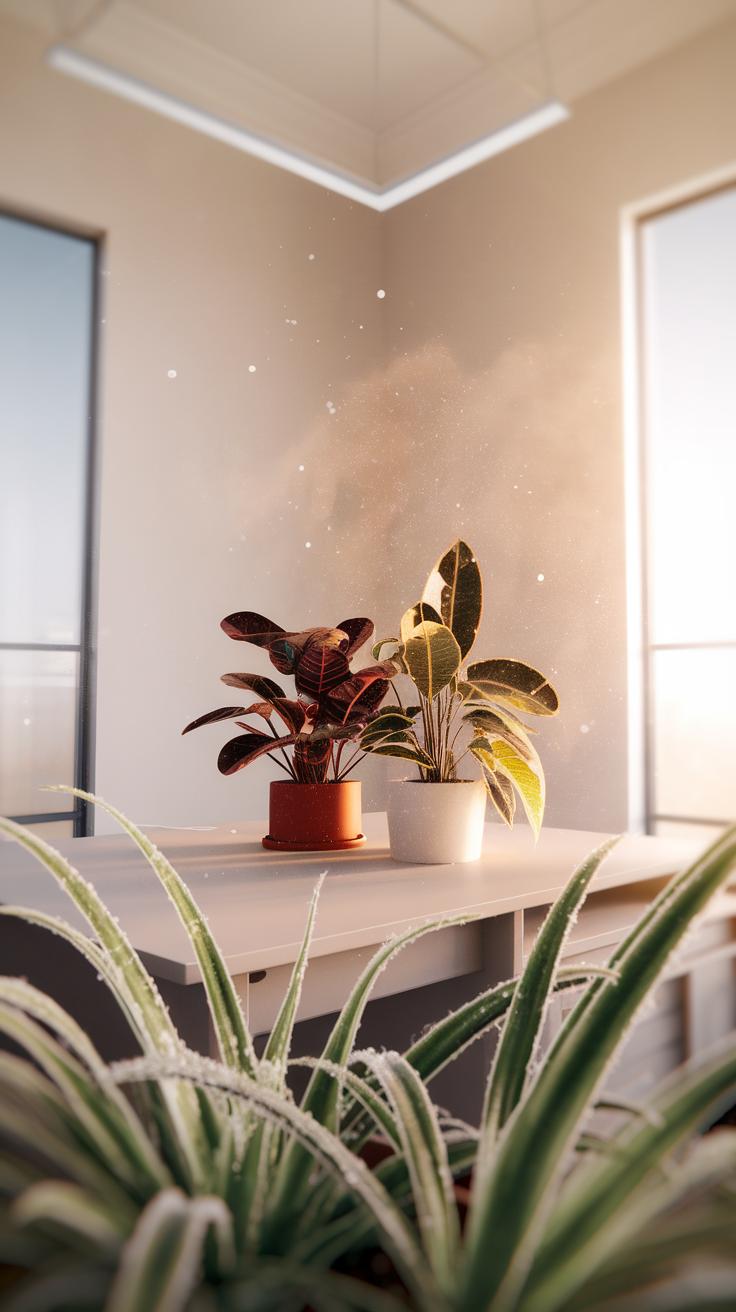
You might not realize it, but indoor air often contains harmful pollutants that can affect your health. Chemicals like formaldehyde, benzene, and carbon monoxide gather in the air inside your home or office. These come from materials like paint fumes, synthetic carpets, and even some cleaning agents.
These pollutants irritate your lungs and eyes, cause headaches, and worsen breathing problems. Over time, they may increase the risk of asthma or other chronic illnesses. Poor air quality sneaks up on you, making it vital to find ways to reduce toxins.
Indoor plants offer a natural way to clear the air. Through their leaves, roots, and soil, they absorb pollutants and break down harmful chemicals. For example, plants like spider plants and Boston ferns remove toxins like formaldehyde, improving the air you breathe daily.
How often do you think about the air quality in your living or work spaces? Adding plants can make a real difference by lowering the levels of pollutants silently affecting you.
Sources of Indoor Air Pollution
Everyday items around you release chemicals into the air without much notice. Cleaning products often contain ammonia and bleach, which emit fumes that irritate your lungs. Cooking indoors, especially with gas stoves, releases nitrogen dioxide and carbon monoxide, both harmful to your respiratory system.
New furniture, carpets, and paint release volatile organic compounds (VOCs). This process, called off-gassing, can last months or years. These VOCs linger quietly, contributing to poor indoor air quality and headaches, dizziness, or allergic reactions.
Even scented candles or air fresheners add chemicals that pollute your air. Understanding these hidden sources helps you choose safer products and improve ventilation.
Have you checked the labels on your household cleaners recently? Choosing natural or plant-based options reduces chemical pollution inside your home.
Health Effects of Polluted Indoor Air
Breathing polluted indoor air can affect your body in many ways. You may notice frequent coughing, wheezing, or shortness of breath. Allergies can worsen, causing sneezing, itchy eyes, or skin irritation. Children and older adults are especially vulnerable.
Long-term exposure to indoor pollutants increases the chance of asthma, bronchitis, or other lung diseases. Poor air quality can also interfere with sleep and reduce your overall energy.
Some people experience headaches, dizziness, or fatigue that vanish when they leave the space. These are signals your body sends when struggling with toxins in the air.
Do you ever feel better after spending time outdoors? Improving indoor air quality by reducing pollutants and adding plants can protect your health every day.
Top Indoor Plants for Cleaner Air
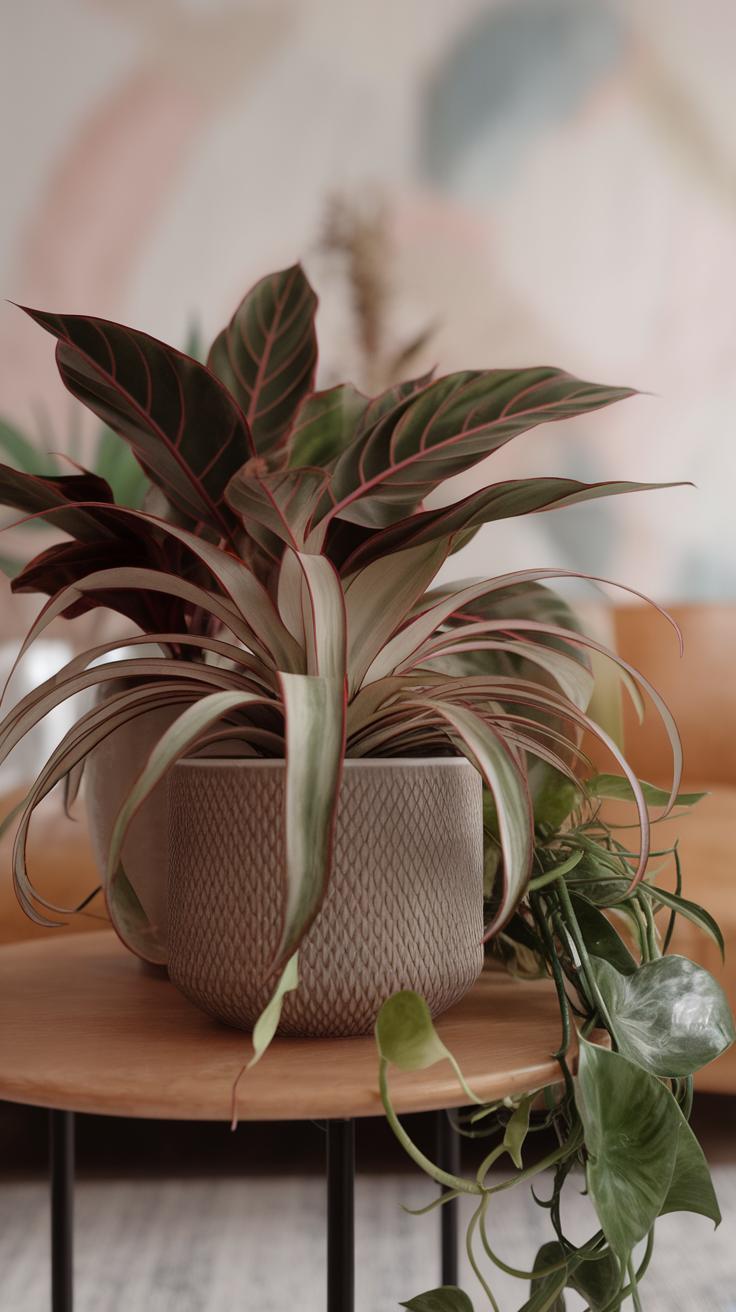
Several indoor plants stand out for their ability to improve your home’s air quality. Each plant not only removes toxins but also adds life to your living space.
The snake plant, known for its tall, stiff leaves with green and yellow patterns, produces oxygen even at night. Its low water and light needs make it easy to care for.
Spider plants have long, arching leaves that grow quickly and multiply, making them perfect if you want to fill a room. They absorb pollutants like formaldehyde and carbon monoxide effectively.
Peace lilies feature glossy green leaves and white flowers. They remove mold spores and airborne toxins. Peace lilies thrive in low light but need regular watering.
Aloe vera, recognized for its thick, fleshy leaves, not only cleans chemicals but offers medicinal benefits. It demands bright light and minimal watering, ideal for busy individuals.
Choosing these plants can reduce indoor toxins and make your home healthier. Which plant fits best with your daily routine and home environment?
Snake Plant and Spider Plant
The snake plant works well in any room, thanks to its upright leaves that produce oxygen around the clock. It tolerates low light and infrequent watering, perfect for people new to houseplants.
Spider plants grow quickly and thrive in indirect sunlight. They generate many “pups,” which you can replant to expand your greenery. These plants trap dust and pollutants, helping keep your air fresh.
Both plants require little attention yet deliver strong air-cleaning benefits. You don’t need a green thumb to help your home breathe better with these species. Could you see yourself adding these plants to your living space?
Peace Lily and Aloe Vera
Peace lilies stand out with their ability to lower airborne mold spores and break down harmful chemicals. Their leaves cleanse the air while the white flowers brighten rooms. They prefer moderate shade and moist soil.
Aloe vera plants filter out volatile organic compounds found in many household products. They need bright light but only occasional watering, making care simple. Plus, your plant becomes a natural remedy for minor skin issues.
Including peace lilies and aloe vera in your home creates fresh air and offers practical benefits. How might these easy-care plants improve your indoor environment and daily health?
Selecting Plants for Different Spaces
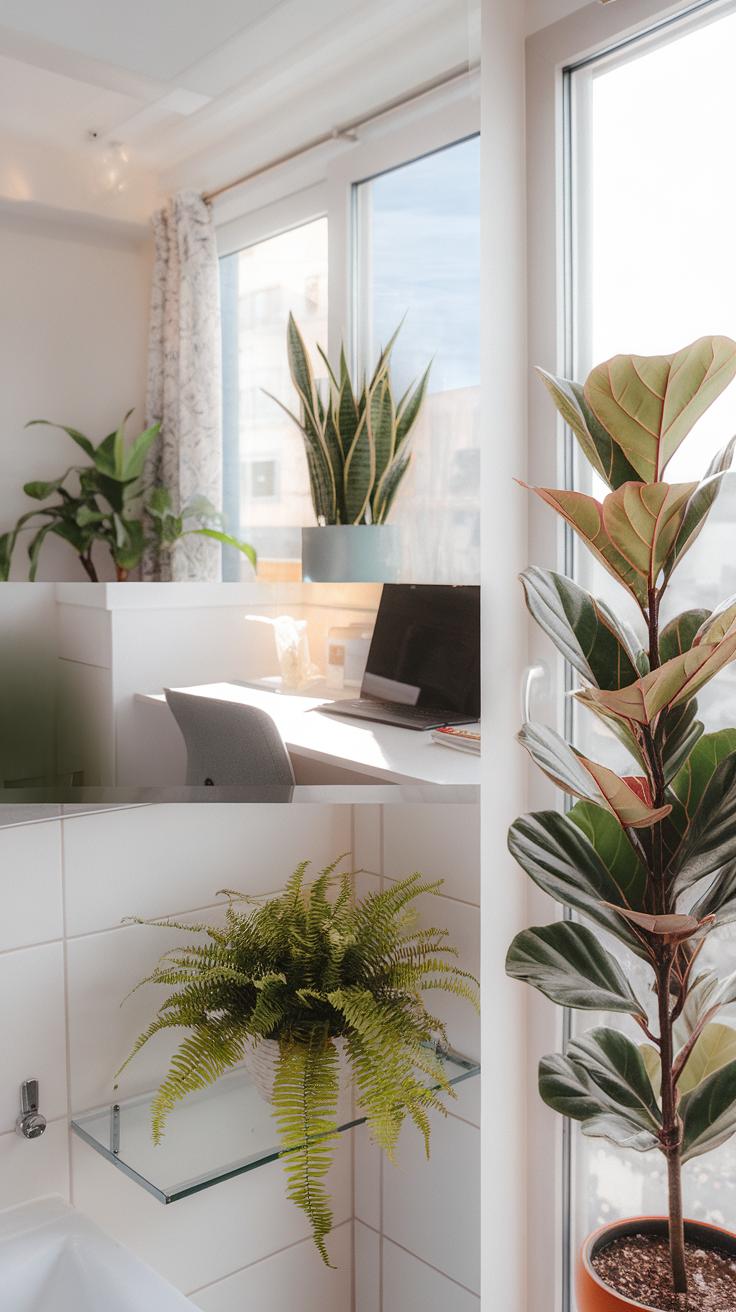
Choosing the right indoor plants depends on your room’s size, light conditions, and your daily routine. Small rooms with tight corners need plants that stay compact and thrive with little sunlight. Larger spaces with good natural light offer more choices but require plants that match the room’s scale and atmosphere. Your lifestyle also matters. If you are often busy or forgetful, picking low-maintenance plants can reduce stress while keeping your space healthy. Have you thought about how much time you can dedicate to plant care? Matching plants to your environment helps you enjoy their air-purifying benefits without added hassle. How do you imagine your ideal green zone? The right selection turns any living area into a fresher, more inviting space.
Low Light and Small Spaces
If your home has dim corners or you live in an apartment with limited room, some plants suit those conditions well. Snake plants can survive with minimal light and need little watering. They also remove toxins like formaldehyde from the air. Pothos vines grow in small pots and adapt to low light while filtering airborne chemicals. ZZ plants handle neglected care and darker spots, making them ideal for busy households. Small spider plants work wonders by improving air quality and fitting on shelves or desks. Can you imagine these plants bringing life to your less sunny spots? Their ability to thrive quietly makes them perfect air cleaners for confined places.
Bright Spaces and Larger Rooms
Rooms with plenty of sunlight and more open space allow for bigger plants that offer distinct benefits. Fiddle leaf figs stand tall with broad leaves that help capture dust and airborne particles. Rubber plants provide a lush look and produce oxygen while filtering pollutants. Areca palms bring tropical freshness while controlling humidity. Boston ferns thrive in bright, indirect light and remove toxins like formaldehyde and xylene. Large snake plants can visually fill empty corners while maintaining clean air. What impact could these plants have on your living environment? Their size and shape can create natural focal points while actively improving air quality in spacious areas.
Caring for Your Indoor Plants
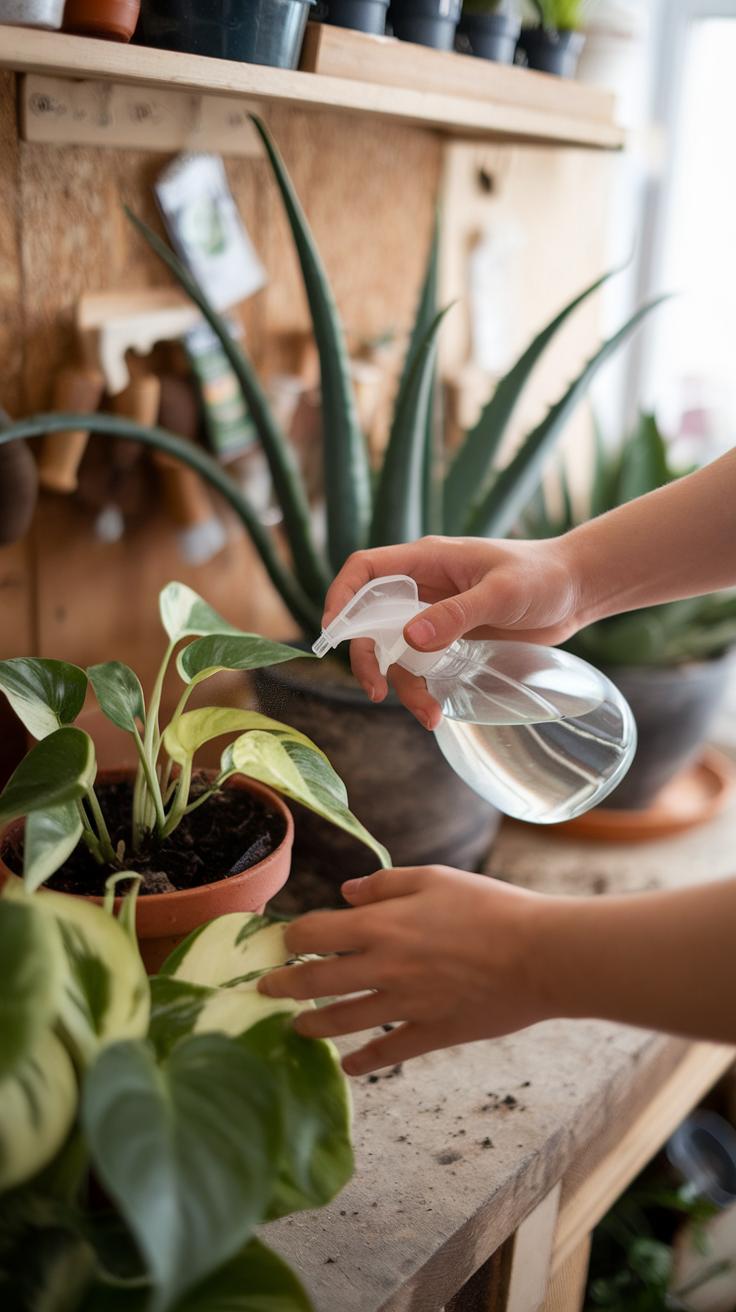
Your plants need the right care to keep improving your air quality and brighten your home. Overwatering can lead to root rot, a common problem that kills many indoor plants. Check the soil before watering—if the top inch feels dry, it’s time to add water. For plants like snake plants and pothos, watering once every 1-2 weeks usually works well. Use pots with drainage holes to prevent water from sitting at the bottom.
Choose soil based on your plant type. Succulents need sandy, well-draining soil, while ferns prefer soil that retains moisture but drains excess water. Repot your plants every 1-2 years to refresh nutrients and give roots room to grow.
Watering and Soil Needs
Water your indoor plants evenly and avoid soaking the soil. Too much water blocks oxygen from reaching roots, causing damage. Some plants like peace lilies prefer moist soil, while succulents store water and need less frequent watering. Use a moisture meter or finger test as a guide.
Use soil mixes designed for indoor plants. You can add perlite or sand to improve drainage if needed. Avoid heavy garden soil that stays soggy. How often do you check your plant’s soil? This simple step helps avoid both overwatering and underwatering problems.
Light and Temperature Conditions
Most air-purifying houseplants thrive in bright, indirect light. Direct sun can scorch leaves, while too little light weakens growth. Spider plants and pothos do well in low light, making them good options for shaded rooms.
Keep indoor plants away from cold drafts or heating vents. Nighttime temperatures between 60°F to 75°F suit most species. Some tropical plants, like the rubber tree, need warmth and humidity to thrive. Ask yourself if your room’s light and temperature match your plant’s needs before placing it there.
Maximizing Air Purification Effectiveness
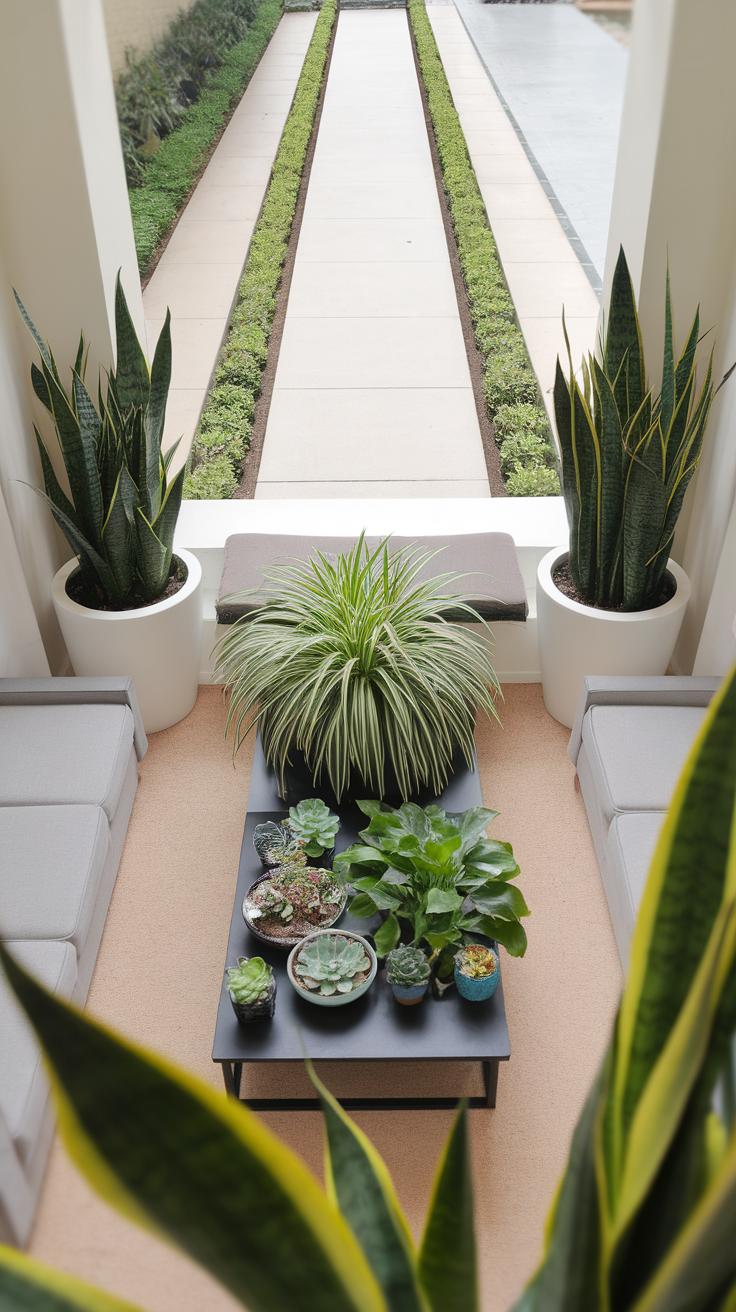
Optimizing Placement
Place your air-purifying plants where they can intercept the most pollutants. Kitchen counters, near cooking areas, capture smoke and odors. Living rooms often trap dust and pet dander, so placing plants nearby helps filter those particles. Bedrooms can benefit from plants on nightstands or windowsills to improve air while you sleep.
Think about airflow patterns. Position plants near vents or windows where fresh air circulates. Avoid crowded corners where air may stagnate. Large-leaf plants work well in open spaces, while smaller ones fit well on shelves or desks.
Could you use plants in areas where you spend hours, like your home office? That simple step may improve your focus and reduce indoor pollution exposure. Keep in mind, strategic placement matters as much as the number of plants.
Maintaining Plant Health
Healthy plants filter air more effectively. Clean leaves regularly with a damp cloth to remove dust that blocks pores. This lets leaves breathe and absorb more pollutants. Inspect plants weekly for pests like spider mites or aphids, which can weaken their performance.
Prune dead or yellowing leaves promptly to redirect energy toward new growth. Overcrowded foliage reduces air circulation and slows purification. Rotate your plants periodically for even light exposure and growth.
Have you noticed less leaf shine or drooping? That could signal care needs that impact air cleaning. Taking time for simple upkeep ensures your plants stay strong and efficient at promoting cleaner air in your home.
Combining Plants with Other Air Quality Strategies
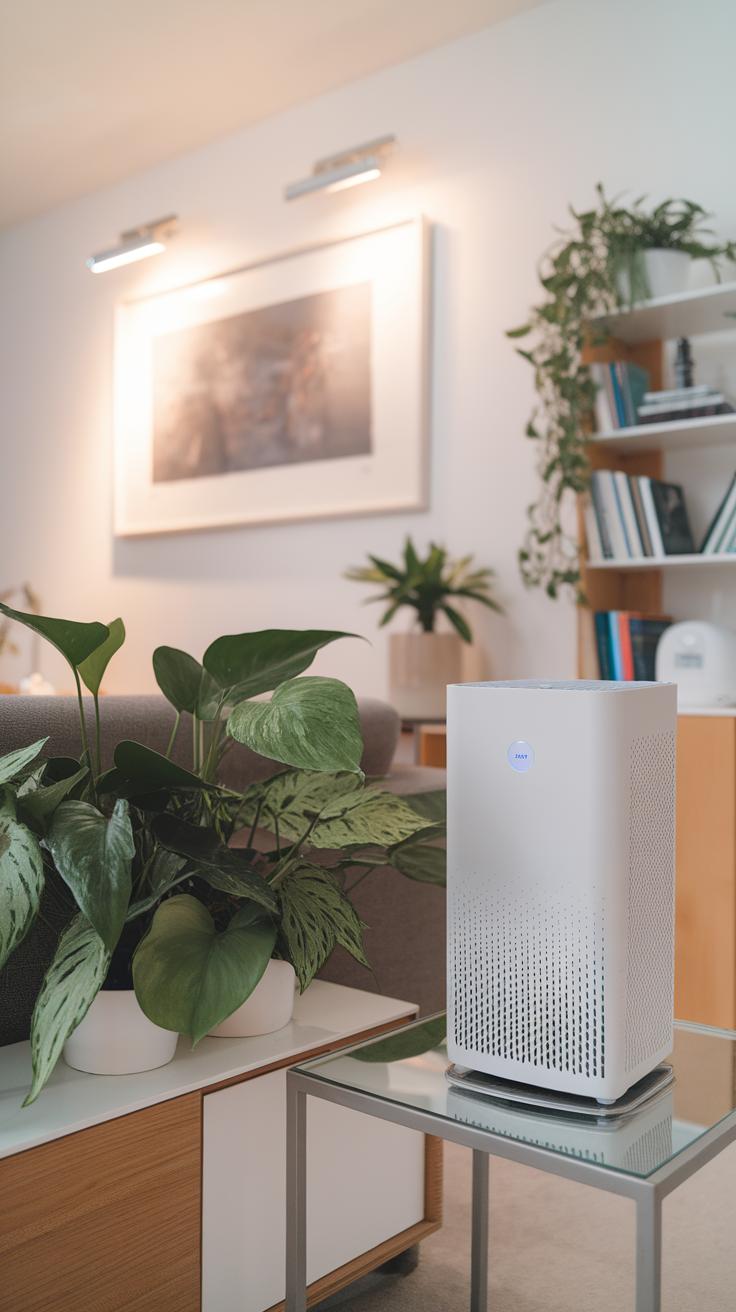
Ventilation and Air Flow
Your indoor plants contribute to fresher air, but they work best when paired with proper ventilation. Bringing in fresh air helps reduce indoor pollutants that plants alone can’t fully eliminate. Opening windows or using exhaust fans promotes air circulation, which prevents stale air from settling around your plants.
Consider how air moves in your home. Placing plants near windows where air flows in can boost their ability to trap airborne toxins. You might ask yourself: How often do I let fresh air into my space? Regularly exchanging indoor air keeps your environment healthier and supports the natural cleansing power of plants.
In rooms with limited airflow, adding vents or using ceiling fans can move air around. This movement encourages plants to absorb more pollutants. Proper ventilation combined with plants creates a cleaner, more breathable atmosphere.
Using Air Purifiers and Plants Together
Air purifiers and plants each tackle indoor air quality differently, but they can create a powerful duo. Mechanical air purifiers capture dust, allergens, and small particles quickly. Plants absorb gases and some volatile organic compounds over time.
You might find that an air purifier filters particles you don’t see, while your plants work silently to neutralize odors and chemicals. Using both can reduce indoor pollutants faster than relying on one method alone.
Try placing plants near your purifier’s air intake to help capture a wider range of pollutants. This teamwork extends the purifiers’ lifespan by lowering dust buildup. Combining these approaches answers the question: How can I create a safer indoor environment with tools I already have?
This blend balances technology and nature, making your home’s air cleaner and your living space more inviting. Would you try upgrading your air filter while adding a few new plants this season?
Indoor Plants and Mental Wellbeing
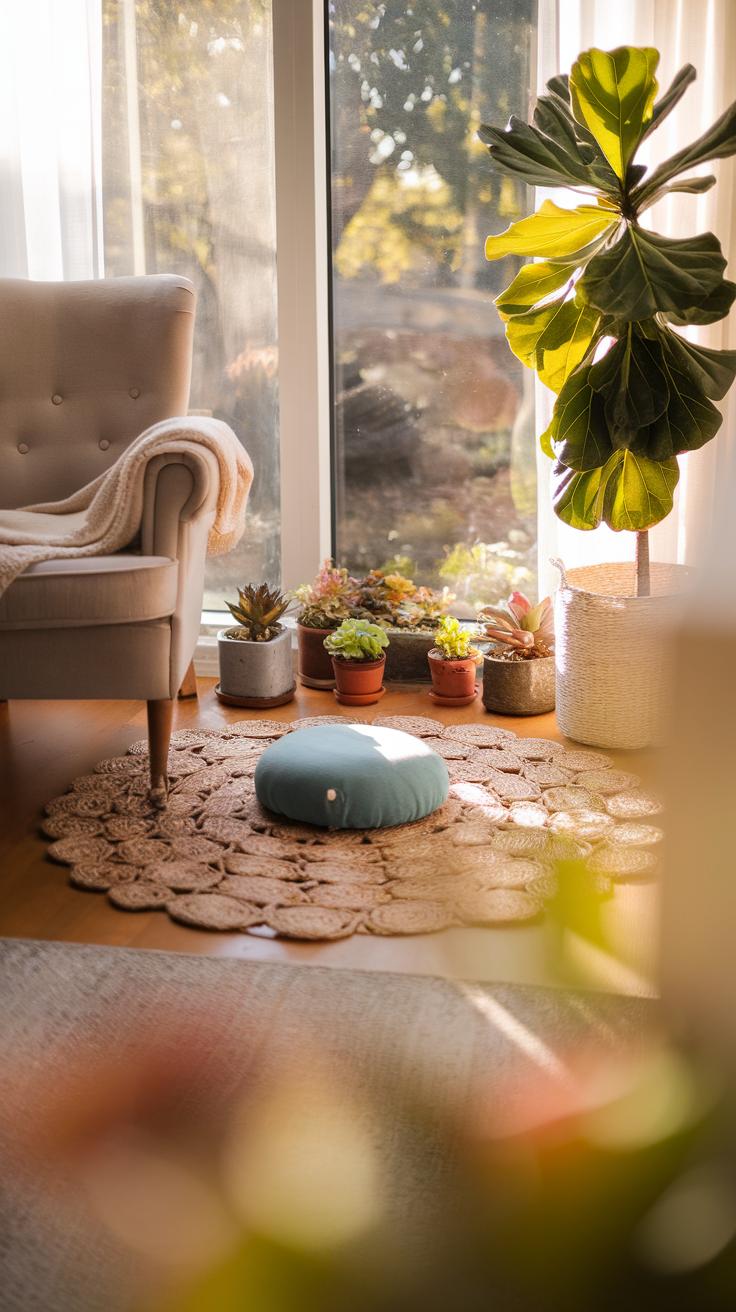
Indoor plants can improve your mental well-being in noticeable ways. Spending time around green leaves can lower stress levels. Scientific studies show that caring for plants helps reduce anxiety and feelings of tension. You might find yourself breathing easier and thinking clearer when a plant is nearby.
Plants can lift your mood too. Their presence creates a calm atmosphere that makes it easier to relax or focus on tasks. Have you ever noticed how a room with plants feels more inviting or peaceful?
Taking care of indoor plants gives a sense of purpose. Seeing new growth or blooms offers small daily victories that improve your outlook. This connection to living things can help reduce feelings of loneliness, especially if you spend a lot of time indoors.
Connection to Nature Indoors
Bringing plants inside helps you stay connected to nature, even when you spend most time indoors. Green leaves and natural textures mimic outdoor settings. They can remind you of forests, gardens, or fields without leaving your home.
Plants respond to light and water, showing visible changes over time. Watching these changes lets you observe nature’s rhythms. This connection encourages mindfulness and awareness.
Have you thought about how rooms with plants make you feel compared to sterile spaces? Indoor plants create a sense of life and growth that brightens your indoor world. This link to nature supports emotional health by reducing feelings of confinement or isolation.
Boosting Productivity and Relaxation
Plants influence how well you work and relax. Studies reveal that offices with plants increase concentration and reduce mistakes. Bringing similar plants into your home workspace can help you stay on task and feel less stressed.
Plants also provide natural relaxation. Their presence lowers heart rates and calms nerves. After a long day, sitting near plants can help you unwind faster.
Have you noticed how a room feels different when it has plants? This change in atmosphere can improve your mood, help you focus, and create a cozy place to recharge. Adding even a few plants may make daily routines feel smoother and more enjoyable.
Common Challenges and Solutions for Indoor Plant Care
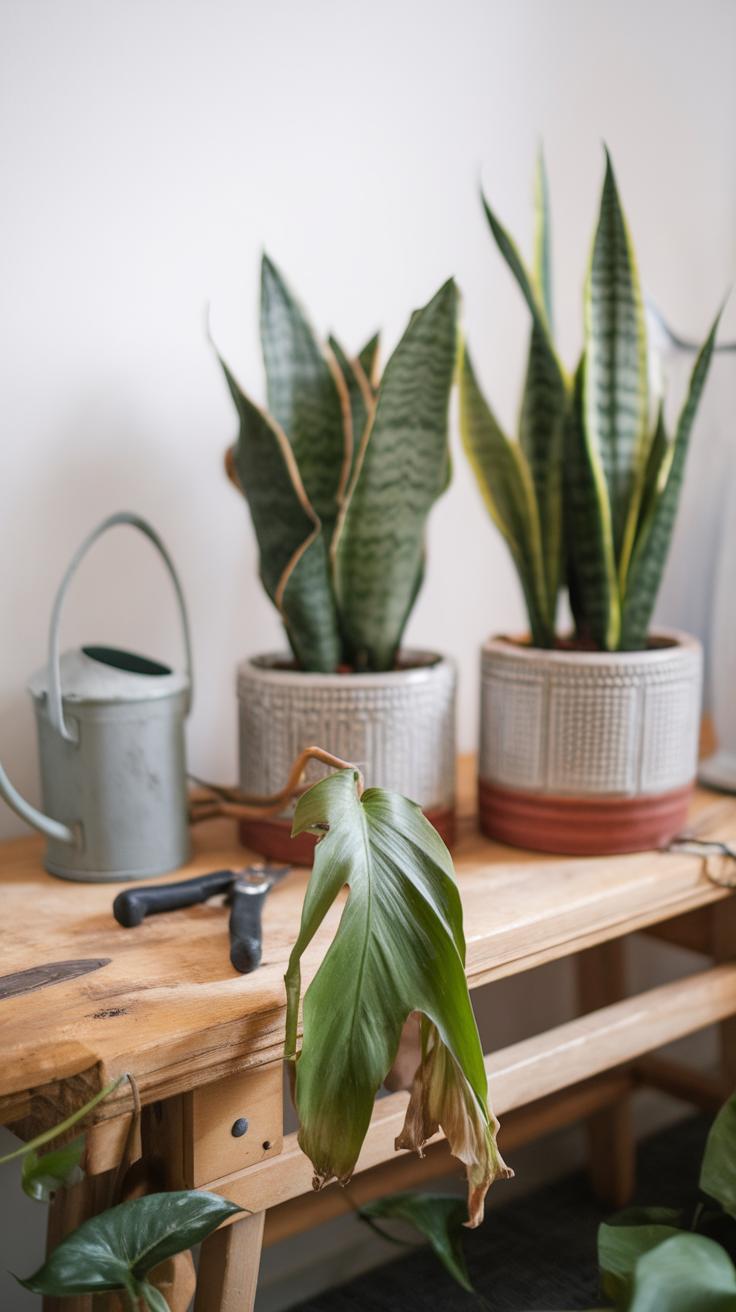
Indoor plants bring life to your home, but they can face issues that affect their health. One frequent challenge is pests and diseases that harm leaves and stems. How can you keep your plants safe?
Understanding the signs of pests like spider mites, aphids, and fungus gnats helps you act quickly. For example, tiny webs or sticky spots often mean spider mites. Use insecticidal soap or neem oil to treat infestations without chemicals. Keeping your plants clean by wiping leaves with a damp cloth also prevents pests.
Diseases such as root rot occur when plants sit in water too long. Avoid overwatering by feeling the soil before adding water. Make sure pots have drainage holes to stop excess moisture buildup. Removing damaged leaves stops disease spread.
Another challenge stems from changing seasons. Your care routine must shift with these changes. Water your plants less in winter when growth slows. Increase watering and light exposure during warmer months. If natural light dims in winter, consider using grow lights to keep plants healthy. Fertilize only during active growth to avoid burning roots.
How often do you check your plants for pests or adjust their care routine? Small actions can prevent major problems and keep your indoor garden thriving year-round.
Conclusions
Indoor plants are a simple and effective way to improve the air quality in your home. Selecting plants known for their air-purifying abilities can significantly reduce common pollutants. Caring for these plants correctly ensures they thrive and continue to clean your indoor air efficiently.
A healthier home starts with small changes like introducing indoor plants that fit your lifestyle and space. Regular maintenance and placing them strategically will maximize their benefits. By understanding and applying these insights, you can enjoy cleaner, fresher air and a more inviting living space.


